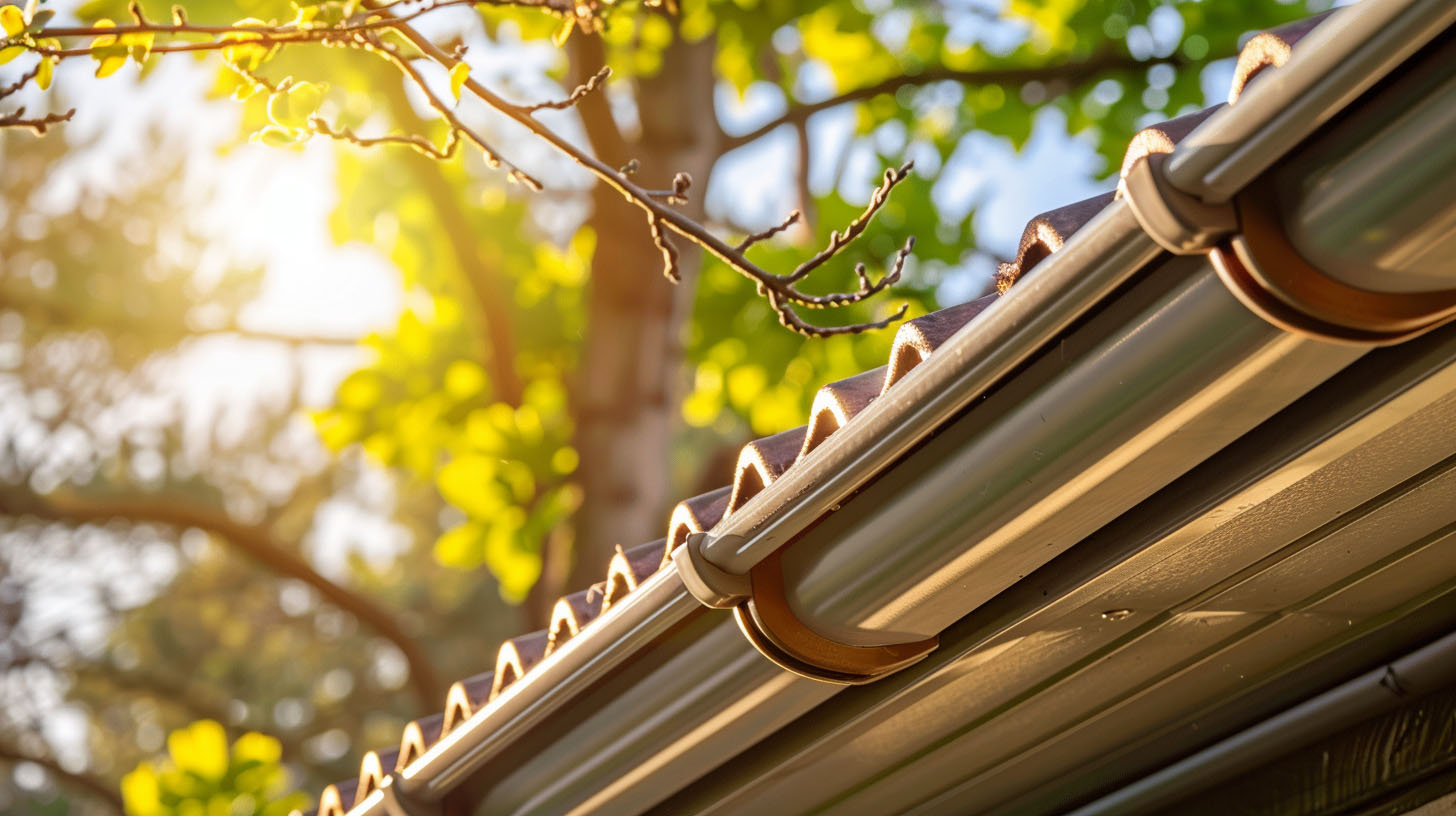The Difference Between Residential and Commercial Gutters
Your system plays an essential role in safeguarding your building from costly water damage. Whether you’re installing gutters for residential buildings or commercial property, understanding their differences is key to protecting your investment effectively. Residential cater to homes, focusing on style and moderate drainage capacity. On the other hand, commercial serve larger facilities where durability and high-capacity water management are vital. If you’re in Long Beach, CA, and need assistance, Specialist Roofing & Repair is here to help. Ready to learn more? Let’s break it down for you step by step.
Understanding Gutter Systems: Residential vs. Commercial
Residential and commercial gutters may share the same fundamental purpose—water management—but are designed specifically for the type of property they serve, including multifamily properties. Factors like building size, roof type, and drainage needs influence the design and material of these systems.
For residential gutters, aesthetics and basic water runoff control dominate the conversation. Conversely, commercial gutters emphasize their boxy shape and functionality, adhering to strict codes while managing higher volumes of water. The contrast between these systems lies in components, size, materials, and capabilities. Let’s start by examining their core importance.
The Purpose and Importance of Gutters in Building Protection
Gutters play a critical role in safeguarding buildings from costly water damage. By directing rainwater and rain gutters away from the foundation, they help maintain the structural integrity and longevity of various properties. In residential homes, effective rain gutters systems prevent erosion and protect landscaping, while in commercial applications, rain gutters are essential for large roofs that handle much water. Ensuring the right installation can extend the lifespan of both residential and commercial properties, ultimately preserving their value and usability.

Key Components Shared by Residential and Commercial Gutters
In both residential and commercial guttersrain gutter installation systems, several key components play crucial roles in effective water management. The fascia board serves as a critical attachment point, supporting the system and ensuring stability. Downspouts, vital for directing rainwater away from the building, are designed to handle varying volumes, whether for multifamily dwellings or expansive commercial structures. Additionally, gutter hangers and end caps are essential for maintaining structural integrity, utilizing durable materials that can withstand specific local regulations and environmental challenges.
Size and Capacity Differences Between Residential and Commercial Gutters
The size of the directly correlates to their water-handling capacity and the building’s overall needs. Residential properties typically feature smaller roofs, calling for moderate drainage solutions. Conversely, commercial structures, with their large roofs and higher water runoff, require much larger systems.
The differences aren’t just about scale; extend into design and efficiency as well. In the next sections, we’ll dive deeper into their specific dimensions, water-handling capabilities, and how building size shapes these requirements.
Typical Dimensions and Water Handling Needs
Gutter dimensions play a crucial role in effectively managing water runoff from buildings. Generally, residential range from 5 to 6 inches in width, capable of handling the typical rainfall from the average home’s roof. In contrast, commercial systems are designed for larger buildings and may exceed 6 inches, accommodating much water from flat roofs or expansive surfaces. Proper sizing is essential to prevent costly water damage, ensuring a right system is installed to meet specific local regulations and the needs of the property.
Impact of Building Size and Roof Structure
Building size and roof structure significantly influence the design of systems. Larger buildings typically require bigger gutters to manage greater volumes of water runoff efficiently. For instance, a commercial structure with a flat roof may necessitate box gutters that can handle direct rain and prevent potential water damage. Conversely, residential properties often have overhanging eaves that impact placement. Understanding these design elements is essential for ensuring effective rain installation, tailored to the specific needs of your property.
Material Choices and Durability
Durability is key for commercial applications, tackling heavier wear from environmental factors. Residential owners can prioritise style and affordability without sacrificing performance. Understanding these distinctions allows property owners to choose the right gutters that fit their needs, ensuring proper drainage and lasting value. Let’s examine the materials in detail.

Common Materials Used in Residential Gutters
Various materials are employed in the construction of residential gutters, each offering distinct benefits. Aluminum gutters are a common choice due to their lightweight nature and resistance to rust, making ideal for diverse climates. Copper gutters, while more expensive, provide an aesthetic appeal with exceptional longevity. Vinyl gutters are also popular for their affordability and ease of installation. Additionally, steel gutters may be used for their strength, though require appropriate maintenance to prevent corrosion. Selecting the right material is essential to minimize costly water damage.
Industrial-Grade Materials and Longevity
The demands of commercial property necessitate stronger, more resilient materials:
- Galvanized steel: A popular choice for commercial applications, offering long-term performance and strength.
- Box gutters: Designed for larger buildings, their square shape adds capacity and durability for high-volume drainage.
- Heavy-duty aluminum: Combines corrosion resistance with the strength needed for commercial facilities.
These materials are tailored to withstand the higher water volume and constant wear often seen in commercial gutter systems. A commercial-grade gutter not only ensures reliability but also reduces maintenance frequency, benefiting business owners long-term.
Get in Touch
Understanding the distinctions between residential and commercial gutters is crucial for both property owners and builders. While residential gutters typically cater to smaller buildings, commercial gutter systems must accommodate the needs of larger structures. Choosing the right gutter system, whether that be aluminum, copper, or vinyl gutters, can help mitigate the risk of costly water damage. Our awards, including Owens Corning Platinum Preferred Contractor, Polyglass Quantum Contractor, and BBB A+ Rated, reflect our commitment to quality. By recognizing these key differences, individuals can make informed decisions and select the best choice for their specific local regulations and property requirements.

Frequently Asked Questions
How often should residential and commercial gutters be maintained?
Residential gutters typically require seasonal cleaning, while commercial gutter systems need more frequent checks due to larger drainage needs. For both, regular inspections are essential to prevent clogs and protect against water damage, ensuring proper operation based on the type of property.
What is the difference between commercial and residential gutters?
Commercial gutters are built larger, using industrial-grade materials like galvanized steel for durability. Residential gutters focus on style, using materials like aluminum or copper. The size of gutters and installation methods serve the differing needs of commercial and residential buildings.
Read our blog: Signs Your Roofer Did a Bad Job (and What to Do About It)



